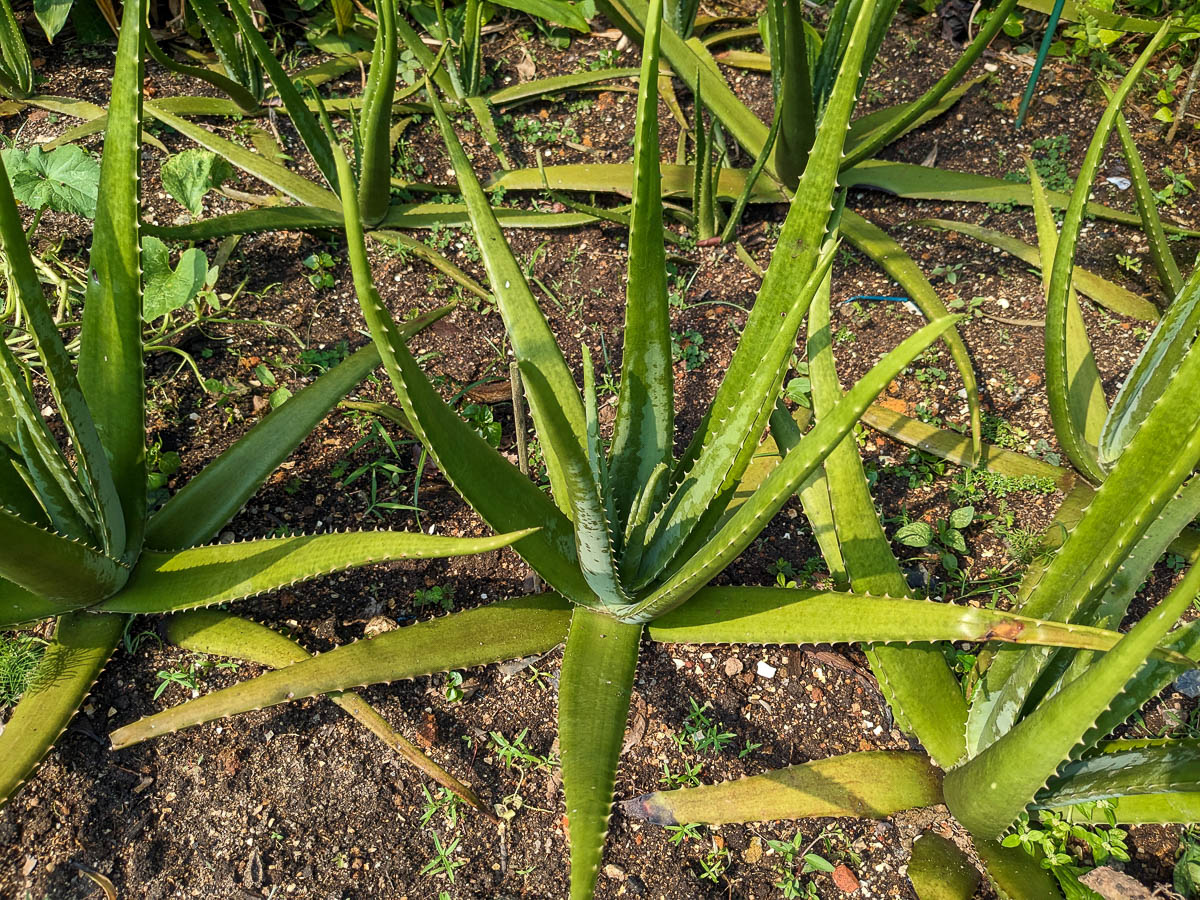Aloe Vera
Aloe vera (Aloe vera)
Other common names: Barbados Aloe, Medicinal Aloe, Burn Plant, 芦荟

Aloe Vera is a succulent herb that grows usually up to 0.3 – 0.6m but can be 1.2m tall in the wild. It has long fleshy triangular leaves arranged in a rosette and is drought tolerant. The smooth leaves are light green with white spots and a spiny leaf margin. It has golden yellow flowers that grows in a cluster, forming an inflorescence.
A perennial, fleshy herb, Aloe Vera is a great plant to grow in containers outdoors, or in gardens with sandy soil. Historically, Aloe Vera gel has been used for a wide range of skin conditions and was thought to promote wound healing and soothe inflammations. The jelly-like flesh of the leaves is also edible, and often used in beverages and desserts.
Sun and soil needs:

This plant thrives in at least 6 hours of direct sunlight. It can also grow in 4-6 hours of direct sunlight or at least 6 hours of indirect sunlight, but at a much slower rate. Plants do best in pots with sandy soil at least 15cm deep, or in true ground that has been amended with plenty of inorganic soil amendments to make it well-draining.
Growing:
Watering should be done at the soil level if possible to prevent water collecting on the leaves which can cause fungal diseases, leading to rot. Fertilise Aloe Veras sparingly, at most once a month with a balanced fertiliser at half the dosage. Offshoots can also be divided as they form so that the mother plant will not grow off centre.
Propagation:
Aloe Vera can be grown from the division of offshoots.
Common problems & solutions:
This plant is susceptible to root rot if grown in waterlogged soil. To prevent rot, grow the plant in sandy soil with plenty of inorganic soil amendments. Plants can also be bottom watered once a week or less to keep the soil airy.
Mealy Bugs often infest the plant if it has underlying problems like root rot. Mechanical pest control methods like pruning the infested parts are the best methods for managing these pests in the short term. However, resolving the underlying problem will prevent them in the long term.

